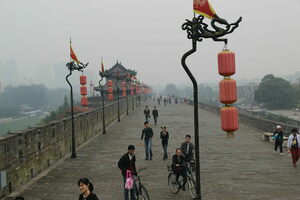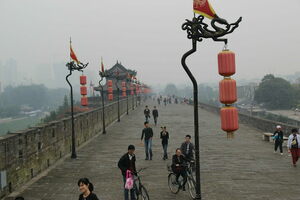
Located in Northwest China, Xi’an is one of the oldest cities in the country. It has played a central role in the region’s culture and politics since the 11th century B.C. Of the many features that make Xi’an stand out, the fortified city walls may be the most apparent to visitors.
The city walls of Xi’an are some of the largest, oldest and best preserved of their kind. They were originally built under the rule of the Hongwu Emperor, Zhu Yuanzhang, as a military defensive system. The emperor had been advised by Zhu Sheng, a sage, to do two things before establishing his empire: build a high wall around the city and create food storage facilities. Zhu did ad advised, and became the first emperor of the Ming Dynasty, which lasted from 1368 to 1644.
Xi’an’s walls have stood for centuries, but they have grown in size and sophistication over time. When the wall was first constructed, it was made entirely out of tamped earth. In the 16th century, bricks were added on top of the earthen walls. During the reign of the Qianlong Emperor in the late 18th century, the fortifications were expanded and new features were added including drainage and crenels, for shooting projectiles through.
Over time the borders of Xi’an have grown beyond the wall, and the structure is now a landmark that divides the different city districts. The wall stands nearly 40 feet tall and measures more than eight miles in length. A total of 98 ramparts dot the wall, extending out about every 400 feet. These were built to defend against enemies climbing up the sides of the wall; each has a sentry building, from which soldiers could protect the entire wall. On the wall’s interior side, parapets were built to protect the soldiers from falling off. The only way for an enemy to enter the city was by attacking the gates of the city wall, there are four gates.
There are many ways to traverse the top of the wall. You can rent a bicycle or even an electric golf cart. But if you want to take your time experiencing this ancient structure, a leisurely stroll in the afternoon or early evening offers beautiful views in the perfect lighting conditions.



